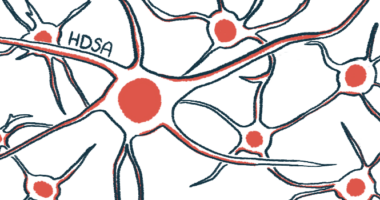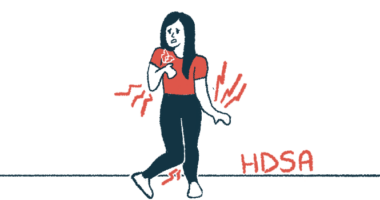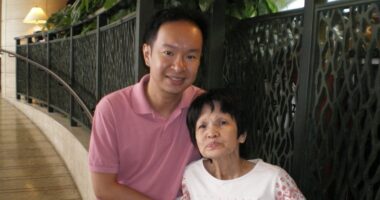Deep brain stimulation for Huntington’s disease
Last updated Feb. 18, 2025, by Marisa Wexler, MS

Deep brain stimulation (DBS) is a surgical procedure that involves implanting thin wires called electrodes in the brain to stimulate specific regions with electrical impulses. The amount of stimulation is controlled by a pacemaker-like device placed under the skin, near the collarbone.
How does deep brain stimulation work in Huntington’s disease?
While DBS has been used for decades to treat Parkinson’s disease and other neurological conditions, its precise mechanisms are not fully understood and are thought to be multifactorial. Researchers believe the electrical stimulation from DBS works to affect the activity of nerve cells, modulating electrical signals in the brain that control complex activities like movement.
DBS has also been evaluated as a potential treatment for Huntington’s disease, a genetic disorder that causes progressive damage to the brain and results in symptoms such as abnormal movements, cognitive impairment, and psychiatric changes. Deep brain stimulation in Huntington’s disease usually aims to stimulate the globus pallidus, a brain region that helps to regulate voluntary movement.
Is deep brain stimulation effective in Huntington’s disease?
DBS in Huntington’s disease is still considered experimental. There have not been many well-controlled studies into its effects, so it’s difficult to say with certainty whether it is effective or which patients may benefit most from the treatment.
Available data suggest that DBS may be an effective treatment to help manage chorea, a hallmark symptom of Huntington’s that manifests as uncontrolled, dancelike movements. Virtually all studies that have tested the effects of DBS in Huntington’s patients have reported reductions in chorea severity that lasted for several years after initiation of DBS. However, the extent of this effect has varied greatly from study to study. Some reported a mean reduction of more than 70% in chorea severity, while others reported a less-than-25% decrease.
Beyond the impact on chorea, research has generally not yielded consistent results as to the potential effects of DBS in Huntington’s. Some studies have showed that patients’ overall motor function improved following DBS, but others have found the opposite effect, with motor function deteriorating after the therapeutic procedure. Some case reports suggest that improvements in overall motor function may be short-lived, waning a few months following DBS.
Little data are available on how DBS may affect cognitive or psychiatric outcomes in Huntington’s patients. Available studies have shown conflicting results, with some reporting stable or improved cognitive function after DBS and others showing worsening of cognition that’s in line with the typical progression of Huntington’s.
Potential risks of deep brain stimulation in Huntington’s disease
While deep brain stimulation is generally considered safe when performed by an experienced healthcare provider, there are some possible risks associated with the surgical procedure used to implant the electrodes and the electric pulse-generation device in the body. Among such risk factors are:
- misplacement of wires in the brain or other complications with the hardware itself
- bleeding in the brain
- pain and/or swelling at the implantation sites
- headache
- stroke
- heart issues
- infection
- seizures
- worse mental or emotional state.
In addition to risks associated with the surgical procedure, risks can develop due to the electrical stimulation in the brain, including:
- movement abnormalities, such as unusually slow movement, difficulty walking, involuntary muscle contractions, and rigidity
- trouble speaking and eating
- balance problems
- lightheadedness
- unusual sensations such as tingling or numbness
- vision changes
- mood changes.
Patients and their caregivers should be aware ]DBS may not bring hoped-for benefits, as the approach in Huntington’s disease is still largely experimental. The potential risks and benefits of DBS should be discussed between patients and caregivers and the clinical care team.
Huntington’s Disease News is strictly a news and information website about the disease. It does not provide medical advice, diagnosis or treatment. This content is not intended to be a substitute for professional medical advice, diagnosis, or treatment. Always seek the advice of your physician or other qualified health provider with any questions you may have regarding a medical condition. Never disregard professional medical advice or delay in seeking it because of something you have read on this website.
Recent Posts
- Ingrezza treatment eases disease burden due to Huntington’s chorea
- A murder trial opened my eyes about Huntington’s and face reading
- What I want people to stop saying about Huntington’s disease
- HDSA 2025: Dance classes may improve balance in Huntington’s
- HDSA 2025: Long-term care transition requires communication
- Guest Voice: Huntington’s disease is rare, but love isn’t
- HDSA 2025: Observational studies in Huntington’s now enrolling in US
- HDSA 2025: Speakers spotlight Huntington’s clinical trials
- HDSA 2025: Speech therapy can help Huntington’s disease patients
- HDSA 2025: Early planning key for navigating care over time






